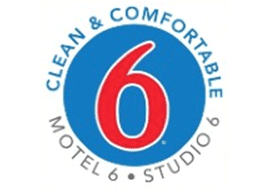Laundry is something we all do, but how often do we think about what’s happening behind the scenes? In today’s blog post, we’ll be diving into the nitty-gritty world of laundry systems, specifically focusing on the maintenance requirements for an ozone laundry system. Join us as we explore the amazing variety of options, the importance of chemicals, and the necessity of understanding what exactly you’re cleaning.
The Art and Science of Laundry
In the realm of commercial laundry, the choices are seemingly endless. You might find yourself encountering options ranging from built detergents (mixes of alkali and detergent) to standalone components which, combined in different ways, create customized laundry solutions.
This might include alkali, non-built detergent, bleach, oxygen bleach, chlorine bleach, and more. Some chemical builds even contain softeners and sour sauces, illustrating the sheer diversity of the laundry chemistry landscape.
Different Builds for Ozone Laundry System
The specific combination of chemicals you’ll need will largely depend on your unique situation and requirements. For example, heavily greased and soiled items will require a significantly different approach than those only lightly dirtied. This highlights the importance of partnering with a chemical provider that fully comprehends the varying needs and can balance these with product cost and desired wash quality.
Indeed, while it’s easy to make things look clean and cheap by using excessive amounts of bleach, this approach can be damaging in the long run, tearing towels apart and causing other forms of damage. Instead, it’s about achieving balance and preserving your linens, as well as understanding your chemical provider’s goals and setting a realistic budget.
The World of Ozone Laundry Systems
The requirements for maintaining ozone laundry systems can sometimes seem complex due to the variety of commercial laundry types out there. Some laundries could be processing anything from gloves from meat packing plants, to shop towels, uniforms, or even household linens such as sheets and towels.
Custom Formulas for Unique Needs
While many facilities might get away with just four or five different laundry formulas, some situations may require significantly more due to the diversity of products being processed.
For example, there are instances where we’ve had to use up to 15 or 20 different formulas based on incoming products. These scenarios might be less common, but they underscore the need to understand the type of laundry you’re processing and the soil levels associated with each.
To keep an ozone laundry system running smoothly and efficiently, one must make the necessary adjustments and ensure the appropriate formulas are used. As with traditional laundry methods, understanding the chemistry behind the process is essential to successful, quality outcomes.
The Key to Success: Maintenance
Maintaining an ozone laundry system is not just about understanding the different chemical options available or the type of laundry being processed, it’s also about routine checks and preventative maintenance. Ensuring that the system is running optimally at all times helps to avoid unnecessary breakdowns and extends the life of the system.
Routine maintenance also helps to balance the cost of the product with the desired wash quality. Making an informed decision about your system’s maintenance can save you from unnecessary expenses down the road.
Wrapping Up
We hope this blog post has been enlightening and has helped you understand the complexities of maintaining an ozone laundry system. Remember, whether you’re dealing with heavy grease or light soil, the key to effective cleaning lies in understanding your needs and the chemistry behind the process.
If you have further questions or if you’d like to explore our range of ozone laundry system solutions, we invite you to contact us. Our team of experts is always ready to help you find the perfect solution for your specific needs.











